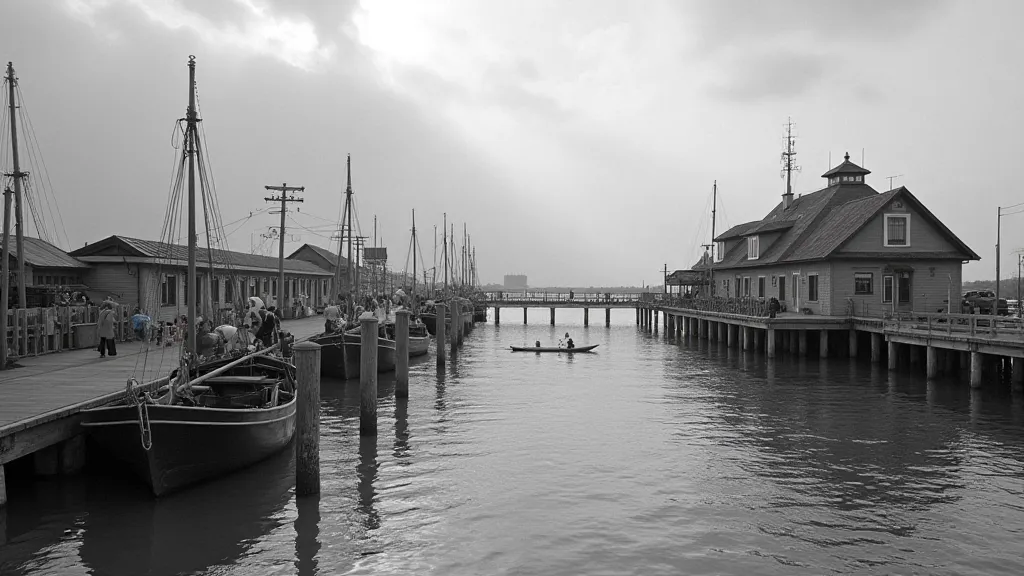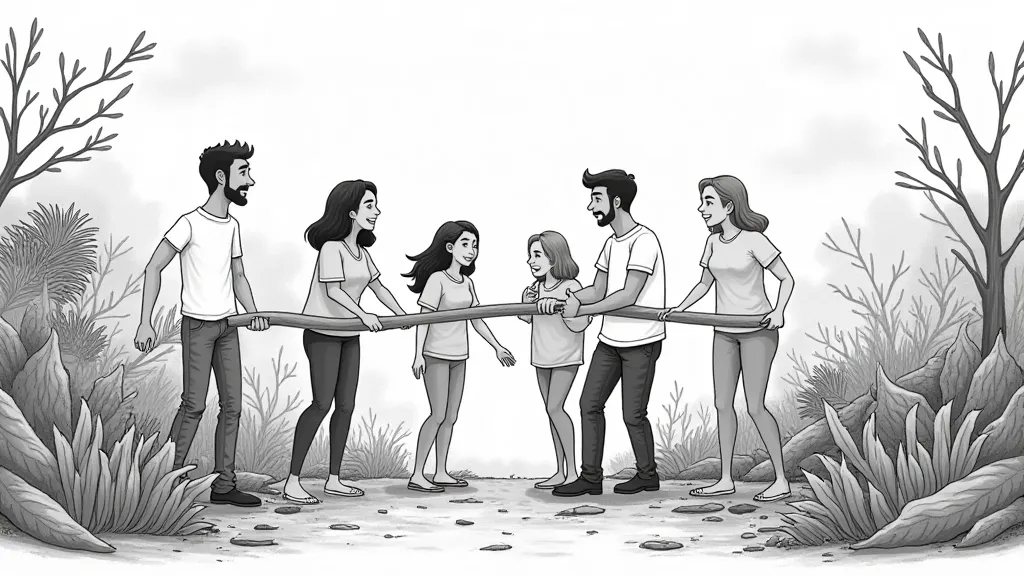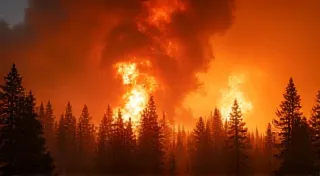The 1953 Atlantic Hurricane Season: A Record-Breaking Year
The 1953 Atlantic hurricane season remains etched in meteorological history as one of the most active and impactful on record, particularly for the Eastern United States. While hurricane seasons fluctuate naturally, 1953 stands out due to the sheer number of storms and the devastating consequences they wrought on coastal communities. This article will delve into the details of this remarkable season, examining storm tracks, intensity, and overall impact. Understanding events like this helps us better understand long-term weather history and provides context for the ongoing conversations about climate change.
A Season of Unprecedented Activity
The 1953 season officially ran from June 1st to November 30th, and saw the formation of 17 named storms. Of these, 7 became hurricanes, and 3 intensified into major hurricanes (Category 3 or higher). This was a significantly higher number of storms than the average for a typical Atlantic hurricane season. The rapid succession of storms and their intensity overwhelmed preparedness efforts in many areas. The conditions leading to such an active season likely had roots in broader climate patterns, prompting further investigation into historical climate variability, like the impacts of sea ice changes and their effect on Atlantic temperatures.

Key Storms of the Season
Several storms in 1953 stand out for their impact. Hurricane Carol, forming in late August, was particularly destructive. It made landfall in Rhode Island as a Category 1 hurricane, but its powerful winds and heavy rainfall caused widespread damage across New England. The storm is considered one of the most significant in the region’s history.
Following Carol, Hurricane Edna tracked a similar path, intensifying into a major hurricane before impacting Nova Scotia. The rapid succession of these storms put a tremendous strain on resources and demonstrated the vulnerability of coastal infrastructure.
Hurricane Hazel, forming later in the season, followed a devastating track through the Carolinas, causing catastrophic flooding and loss of life. The storm’s impact underscored the importance of accurate forecasting and timely evacuation orders. The challenges faced in 1953 were amplified by less sophisticated forecasting and warning systems compared to those of today. The unusual climatic conditions contributing to the intensity of the 1953 season weren't entirely unprecedented; climate fluctuations have significantly impacted human societies throughout history. Events like the monsoon failures in Mughal India, documented in "The Cartographer's Grief: When Monsoon Failure Painted Landscapes of Despair in Mughal India," serve as a stark reminder of the far-reaching consequences of shifts in weather patterns.
Further complicating matters, a third major hurricane, Hurricane Susan, also developed and moved across the Atlantic, contributing to the overall sense of anxiety and disruption throughout the season. The events of 1953 remind us that seemingly isolated occurrences are often linked to larger cyclical patterns. For example, the societal and economic disruptions caused by droughts in the 1930s, like those experienced during the Dust Bowl, highlighted the importance of understanding and mitigating extreme weather risks.
Analyzing Storm Tracks and Intensity
The storm tracks during 1953 were notably clustered, with many storms impacting the Mid-Atlantic and Northeastern United States. Meteorological analysis suggests a combination of factors contributed to this pattern, including warm sea surface temperatures and favorable atmospheric conditions. These warm sea surface temperatures are particularly noteworthy. Understanding how such conditions arose requires a broader historical perspective. Consider, for instance, the extended periods of colder temperatures during the Little Ice Age and how shifts in these conditions can influence regional climates. The abrupt changes in climate, even seemingly small ones, can ripple through societies and ecosystems, and the mysteries surrounding such shifts have captivated scholars for decades. Similar unexplained atmospheric anomalies are subjects of ongoing research, sometimes even prompting reinterpretations of ancient narratives, as explored in "Whispers from the Ice Age: How Paleoclimatology is Rewriting the Epic of Gilgamesh," demonstrating how climate history can inform our understanding of ancient civilizations.
The intensity of the storms was also a key factor in the devastation. While some storms weakened before landfall, others maintained their strength, delivering powerful winds and torrential rainfall to vulnerable coastal communities. Historical weather records indicate that the sea surface temperatures in the Atlantic Ocean were unusually warm in 1953, providing ample energy to fuel hurricane development and intensification. These deviations from the norm emphasize the intricate interplay of atmospheric and oceanic conditions, demonstrating the value of long-term records and the challenges of isolating specific causes.

Impact on Coastal Communities
The 1953 hurricane season brought widespread devastation to coastal communities from Florida to Maine. Damage included destroyed homes, businesses, and infrastructure. Flooding was a major issue, both from storm surge and torrential rainfall. The loss of life was tragic, and the economic impact was substantial. The need to rebuild and adapt infrastructure after such a catastrophic event spurred innovation and ultimately led to improved building codes and disaster preparedness protocols.
Beyond the immediate destruction, the season prompted important discussions about coastal planning, building codes, and disaster preparedness. It highlighted the need for improved warning systems and evacuation strategies. The experience served as a catalyst for significant advancements in hurricane forecasting and mitigation efforts, laying the groundwork for the sophisticated systems we utilize today. Comparisons to historical records reveal ongoing shifts in seasonal weather patterns; even past winters show dramatic differences in snowfall, as documented in past winters and their snowfall records.
Lessons Learned and Historical Context
The 1953 Atlantic hurricane season provides valuable lessons for understanding historical weather patterns and climate variability. It serves as a stark reminder of the power of nature and the importance of preparedness. While the specific drivers behind the season’s intensity are complex, it offers insights into the potential for extreme weather events in a changing climate. The cyclical nature of weather events is particularly relevant; understanding these cycles requires looking back at long-term climate data, which can reveal patterns that might otherwise be obscured. Understanding the forces shaping our planet’s climate is a monumental undertaking. The unusual fog and low cloud patterns documented throughout history, as explored in "Changing Patterns of Fog and Low Clouds: A Historical Perspective," illustrate how subtle shifts in atmospheric conditions can have profound impacts on regional climates and ecosystems. The 1953 season, viewed through this broader historical lens, highlights the enduring challenges of predicting and adapting to extreme weather.
Analyzing events like this within the broader context of historical climate data helps scientists better understand long-term trends and predict future risks. Although natural variability plays a crucial role, understanding the influence of climate change on hurricane frequency and intensity remains a critical area of research. The data collected during the 1953 season continues to be analyzed and compared to current climate patterns. It's important to note that while natural cycles undoubtedly influence weather patterns, the long-term trends observed in recent decades suggest a more complex interplay of factors, prompting a deeper exploration of climate change impacts on extreme weather events.

Further research has helped to illustrate the complexity of these factors. Examining the timing and severity of past extreme weather events provides a crucial baseline for assessing future risks and developing appropriate mitigation strategies. The 1953 hurricane season, while a singular event in its intensity, serves as a powerful reminder of the ongoing need for vigilance and a commitment to scientific understanding of our planet's climate. The study of past climates reveals a fascinating narrative, often punctuated by abrupt and dramatic shifts, offering invaluable insights into the complex interplay of factors that govern our planet’s weather patterns. Even the "Year Without a Summer" in 1816, with its volcanic ash and subsequent chilling temperatures, underscores the potential for sudden and unexpected climate disruptions that can challenge human resilience.
The lessons derived from events like the 1953 hurricane season extend beyond meteorological science, informing social and economic policies aimed at building resilience in vulnerable communities. The devastating effects of storms like Hazel and Carol prompted significant investments in coastal infrastructure and emergency management systems, demonstrating the direct link between scientific knowledge and societal well-being.
The ability to accurately forecast and prepare for such events relies heavily on historical data and advanced modeling techniques. Continuous improvement in these areas is essential for minimizing the impact of future extreme weather events and protecting human lives and property. Looking ahead, the data from the 1953 season remains a critical resource for validating climate models and refining our understanding of hurricane behavior.





